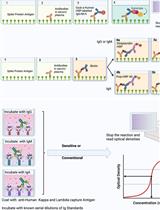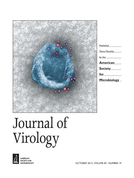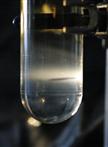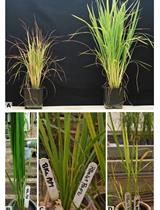- EN - English
- CN - 中文
ELISA on Virus-Infected Cells
病毒感染细胞的酶联免疫吸附试验
发布: 2014年05月20日第4卷第10期 DOI: 10.21769/BioProtoc.1127 浏览次数: 12452
评审: Anonymous reviewer(s)

相关实验方案

用于检测和定量人血浆或血清中抗病毒抗体的优化间接 ELISA 方案:以 SARS-CoV-2 为例的案例研究
Claire Baine [...] Jennifer Serwanga
2023年12月20日 3552 阅读
Abstract
The gammaherpesvirus murid herpesvirus 4 (MuHV-4) enters cells by endocytosis from the cell surface and fusion of the viral envelope with the membrane of late endosomes. The viral envelope glycoproteins undergo antigenic changes both upon virion endocytosis and upon fusion of the viral envelope with the endosomal membrane. These changes in virion antigenicity during virus entry were first described by immunofluorescence of infected cells. Although immunofluorescence provides valuable information on the subcellular distribution of the viral glycoproteins, the quantification of immunofluorescence signals in a large number of cells is not only dependent on relatively expensive microscopy equipment, but is also relatively time-consuming. In order to quantify the antigenicity of MuHV-4 virions entering NMuMG epithelial cells in a reliable, as well as time- and cost-effective way, we have developed an ELISA with infected cells as the solid phase. In this assay, cells are grown on 96-well tissue culture plates, exposed to virions at 4 °C, followed by incubation at 37 °C allowing virion endocytosis. Cells are fixed either directly after virion binding at 4 °C or after incubation at 37 °C. After subsequent permeabilization, the cells are incubated with monoclonal antibodies specific for the viral envelope glycoproteins, followed by detection with an alkaline phosphatase-coupled secondary antibody. Upon incubation of cells with p-nitrophenyl phosphate substrate, the absorbance is measured on a conventional ELISA microplate reader. The different ways of data interpretation are discussed.
Keywords: Herpesvirus (疱疹病毒)Materials and Reagents
- NMuMG cells (ATCC, catalog number: CRL-1636 )
- BAC-derived MuHV-4 strain 68 (Adler et al., 2000)
- Glutamine (PAA Laboratories GmbH, catalog number: E15-883 )
- Fetal bovine serum (FBS) (Amimed, catalog number: 2-01F10-I )
- 100 U/ml penicillin and 100 µg/ml streptomycin (PAA Laboratories GmbH, catalog number: P11-010 )
- Trypsin-EDTA (PAA Laboratories GmbH, catalog number: L11-003 )
- Trypan blue solution (Sigma-Aldrich, catalog number: T8154 )
- Paraformaldehyde (Sigma-Aldrich, catalog number: P6148 )
- Glycine (Sigma-Aldrich, catalog number: 50046 )
- Triton-X100 (Sigma-Aldrich, catalog number: X100 )
- Tween 20 (Sigma-Aldrich, catalog number: P1379 )
- Bovine serum albumin (BSA) (Fraction V) (Amresco, catalog number: 0332 )
- MuHV-4 envelope glycoprotein-specific monoclonal antibodies (hybridoma supernatants) (Glauser et al., 2012b; Glauser et al., 2013)
- Alkaline phosphatase-conjugated goat anti-mouse IgG (γ chain specific) polyclonal antibody (SouthernBiotech, catalog number: 1030-04 )
- p-nitrophenyl phosphate tablets (Sigma-Aldrich, catalog number: N2770 )
- Complete medium (see Recipes)
- 10x PBS (pH 7.4) (see Recipes)
- 1x PBS (pH 7.4) (see Recipes)
- Trypsin-EDTA (see Recipes)
- PBS (pH 7.4)
- PBS containing 4% formaldehyde (see Recipes)
- PBS containing 0.1 M glycine (see Recipes)
- PBS containing 0.1% Triton-X100 (see Recipes)
- PBS containing 0.1% Tween 20 and 2% BSA (see Recipes)
- PBS containing 0.1% Tween 20 (see Recipes)
- PBS containing 4% formaldehyde (see Recipes)
- ELISA substrate (p-nitrophenyl phosphate) (see Recipes)
Equipment
- 150 cm2 tissue culture flasks (TPP Techno Plastic Products, catalog number: 90150 )
- 96-Well tissue culture plates (F-base) (TPP Techno Plastic Products, catalog number: 92096 )
- Standard tissue culture equipment
- Cooled tabletop microfuge
- Fume hood
- 37 °C, 5% CO2 incubator
- 4 °C cold room
- Sunrise microplate reader (Tecan Trading AG)
- Neubauer improved hemocytometer
- 10, 20, 200, and 1,000 µl volume pipettes and tips
- 200 µl volume 12-channel pipette
- 5 ml Bijoux tubes (Sigma-Aldrich, catalog number: Z645346 )
- Disposable sterile buffer reservoirs for multichannel pipettes
- Polystyrene boxes
Software
- Microsoft Excel 2010
Procedure
文章信息
版权信息
© 2014 The Authors; exclusive licensee Bio-protocol LLC.
如何引用
Glauser, D. L. and Stevenson, P. G. (2014). ELISA on Virus-Infected Cells. Bio-protocol 4(10): e1127. DOI: 10.21769/BioProtoc.1127.
分类
微生物学 > 微生物-宿主相互作用 > 病毒
生物化学 > 蛋白质 > 免疫检测 > 酶联免疫吸附试验(ELISA)
您对这篇实验方法有问题吗?
在此处发布您的问题,我们将邀请本文作者来回答。同时,我们会将您的问题发布到Bio-protocol Exchange,以便寻求社区成员的帮助。
Share
Bluesky
X
Copy link










